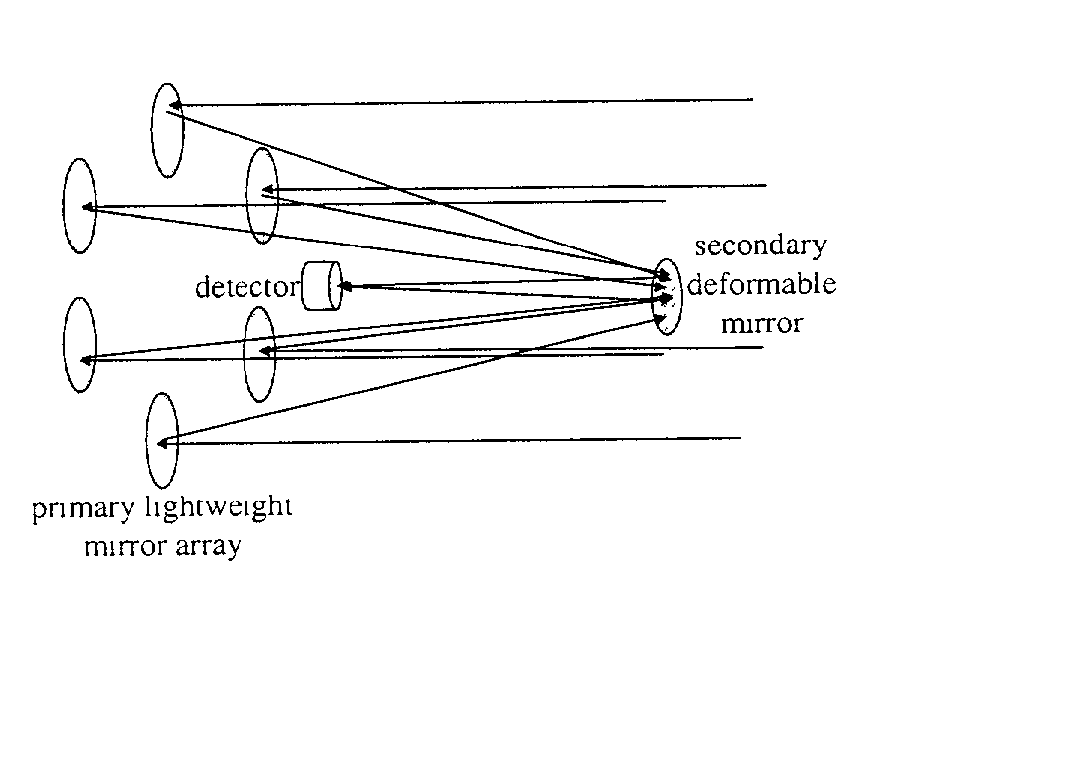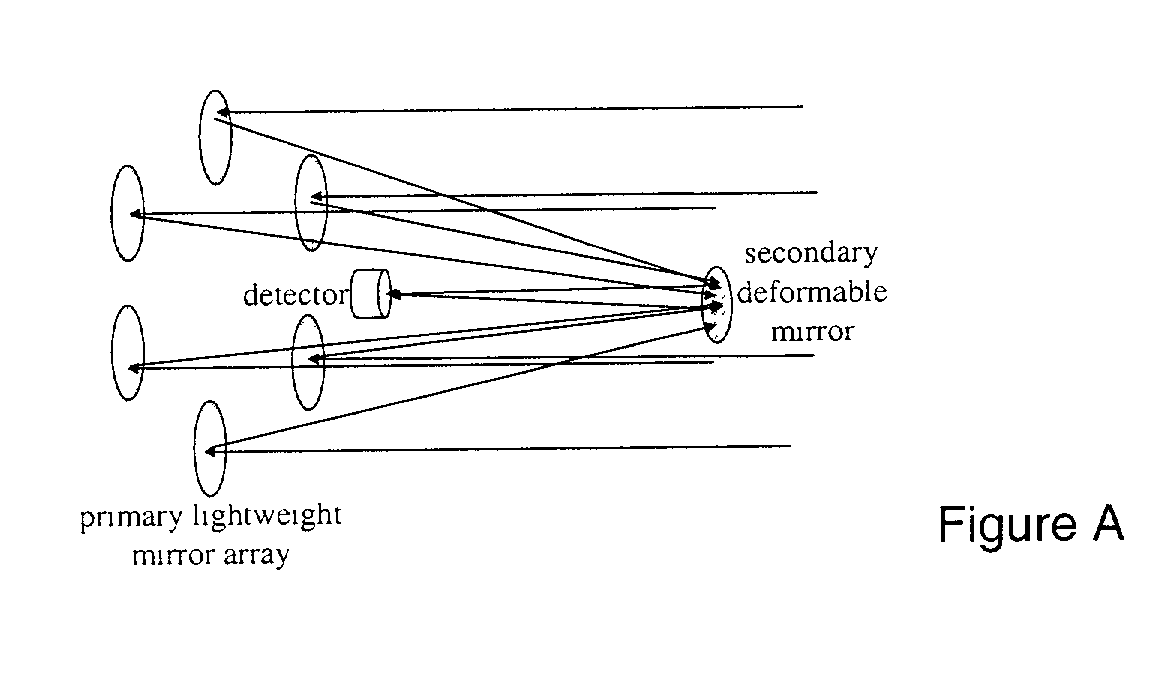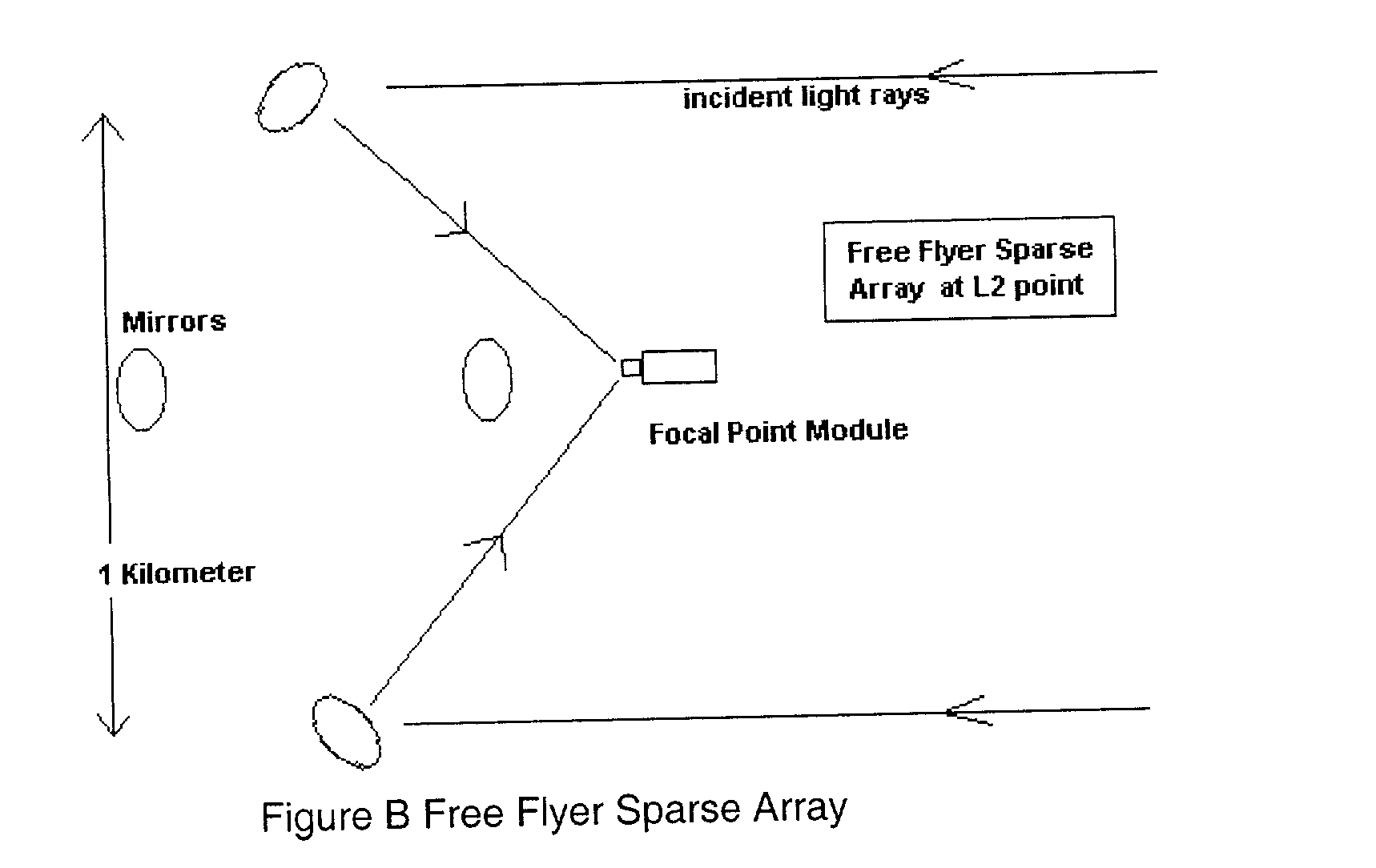Telescope sparse array not requiring the use of laser interferometry
a technology of laser interferometry and telescopes, which is applied in the field of telescope sparse arrays that do not require the use of laser interferometry, can solve the problems of difficult compensation, nightmares (or impossible) at best, and little gain in extrasolar earthlike planet imaging, and achieve the effect of rapid strehle ratio maximization and high resolution
- Summary
- Abstract
- Description
- Claims
- Application Information
AI Technical Summary
Benefits of technology
Problems solved by technology
Method used
Image
Examples
Embodiment Construction
[0062] There are 6 3 meter thin freeflying mirrors with actuation at a kilometer from the focal point module in that sparse array. The tiptilt is controled by sensors at the focal point module that control beam pointing. The piston control is done by rapid strehle ratio maximization on the star that the planet is orbiting. Fine mirror control can be done by variable reflectivity of the backside of the mirrors. The mirrors can be placed at L2 so that their orbits are all the same.
PUM
 Login to View More
Login to View More Abstract
Description
Claims
Application Information
 Login to View More
Login to View More - R&D
- Intellectual Property
- Life Sciences
- Materials
- Tech Scout
- Unparalleled Data Quality
- Higher Quality Content
- 60% Fewer Hallucinations
Browse by: Latest US Patents, China's latest patents, Technical Efficacy Thesaurus, Application Domain, Technology Topic, Popular Technical Reports.
© 2025 PatSnap. All rights reserved.Legal|Privacy policy|Modern Slavery Act Transparency Statement|Sitemap|About US| Contact US: help@patsnap.com



